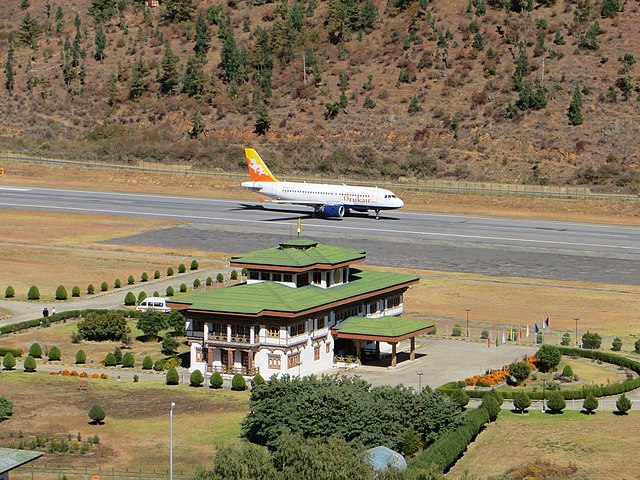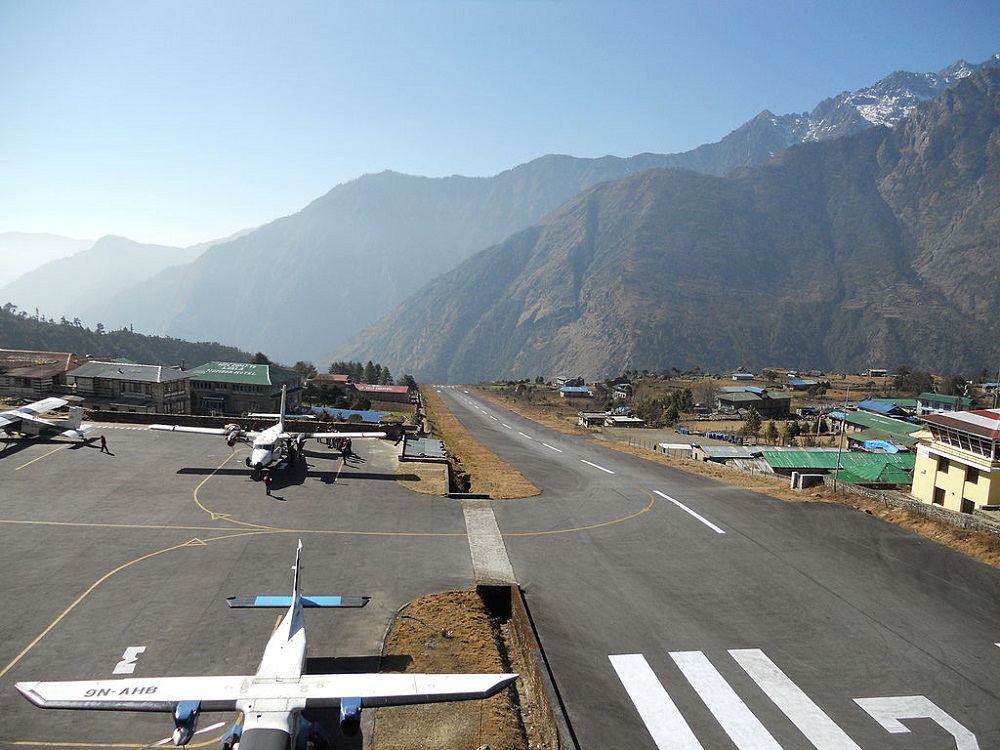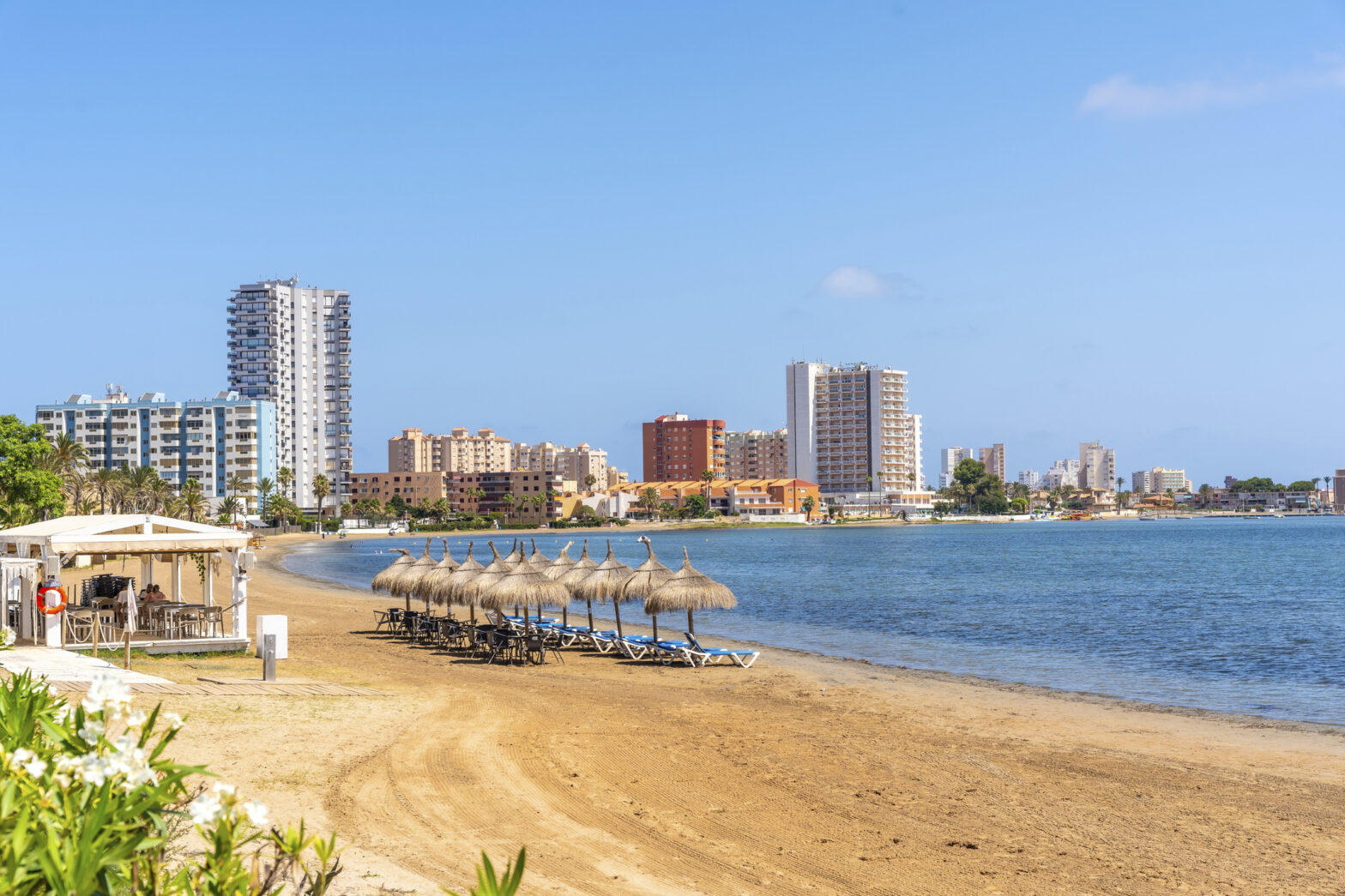Traveling by plane is a good time-saving alternative, and statistically the safest method of travel. However, in certain places, a simple trip can become a nightmare if a place has dangerous airport landings.
We’ve rounded up some of the worst around the globe. We took into consideration the following factors: having short runways, being located at a high altitude, being in a place with unusual weather conditions, registering a high density of air traffic or being in the middle of mountains or buildings.
Each one of these dangerous airport landings require highly experienced pilots, who must perform arduous landing and take-off maneuvers. Landings are where you are likely to encounter the most risks for an accident due to the aircraft’s proximity to the ground. Gitnux reported, “Federal Aviation Administration (FAA) data shows that 80% of commercial airplane accidents occur during takeoff or landing.”
But do not let that scare you from flying as CNN reported, “the worldwide death risk per boarding was one in 13.4 million – that means that if you picked a flight completely at random and just took it, your chance of dying in a plane crash or a terrorist act was about one in 13 million.”
Although there is no single list containing all dangerous airports landings, the names of several of them are mentioned in blogs and specialized pages. Here are 10 of them.
1. Tenzing-Hillary Airport, Nepal

For those who want to climb Mount Everest, the adventure begins at landing, as the Tenzing-Hillary Airport (also known as Lukla), in Nepal, is considered the most dangerous airport in the world.
Located 2,842 meters above sea level, the terrifying airstrip is just 527 meters long. In addition, the site is surrounded by mountains and chasms, and it can only be accessed by helicopters and small aircraft. Adding to the challenge is the significant gradient of the runway. It has a slope of approximately 12%, meaning it is angled uphill. Pilots need to carefully manage their approach and landing to ensure they touch down safely within the limited runway space.
2. Paro Airport, Bhutan

The list of pilots authorized to land at Paro airport in Bhutan is very small. Pilots must navigate a narrow valley during the approach to Paro Airport, which requires precise flying skills to maneuver the aircraft safely. The approach path involves making a sharp turn to align with the runway, adding complexity to the landing procedure.
Additionally, Paro Airport sits at an elevation of approximately 7,332 feet (2,235 meters), which can affect aircraft performance due to reduced air density and thinner air. This requires pilots to carefully manage speed, power, and descent rate to ensure a safe landing and takeoff. And on top of all of that, Paro Airport has a single runway, which is only 6,500 feet (1,981 meters) long. This limits the types of aircraft that can operate at the airport and requires pilots to execute precise landings and takeoffs within a relatively short distance.
The track is very close to the Himalayas, surrounded by mountains over 5,000 meters high. This makes approaches and departures challenging due to the rugged terrain and unpredictable weather conditions. Flights may only arrive or depart during the day.
3. Barra Airport, Scotland

You won’t find an airport as peculiar as Barra, Scotland, anywhere else in the world. On this European island, the airstrip is on the sand. It is the only airport in the world where scheduled flights land and take off from a beach. The airport’s three runways are marked by wooden poles, and they are on the wide sandy beach of Traigh Mhòr on the island of Barra. Landing is only possible if weather permits. The three lanes can be completely submerged during high tide days. For this reason, Flight schedules have to be adjusted according to the tide times, and landings and takeoffs can only occur when the tide is out.
4. Wellington Airport , New Zealand

To land at the airport in Wellington, New Zealand, the pilot needs to have a lot of skill and experience. The nearly 2000 meter long runway is often hit by very strong gusts of wind caused by the funneling effect of the Cook Strait and the nearby mountainous terrain, making landing quite challenging. The prevailing wind patterns in Wellington can create turbulent and unpredictable conditions for aircraft approaching and departing the airport. Crosswinds, wind shear, and turbulence are common challenges faced by pilots, requiring advanced flying skills to navigate safely.
Wellington Airport’s runway also has a noticeable slope, with one end higher than the other. This can affect aircraft performance during takeoff and landing, requiring adjustments in power settings and approach angles. Due to the challenging conditions at Wellington Airport, pilots undergo specialized training and adhere to strict operational procedures to ensure safe operations. This includes specific approach and departure procedures designed to mitigate the effects of wind and terrain.
5. Courchevel Airport, France

The starting point for those who want to enjoy the ski resorts in the French Alps, Courchevel airport, offers great adrenaline. Snow and mountains are not the only obstacles in the place. The runway is just over 500 meters long and, unlike regular airstrips, it has an 18-degree incline to help with the landing, making it one of the steepest in the world. This limits the types of aircraft that can operate at the airport and demands precise maneuvering during takeoff and landing.
Courchevel Airport also operates at a high altitude of approximately 2,008 meters. This affects aircraft performance, requiring longer takeoff and landing distances and reducing engine and aerodynamic efficiency.
6. Princess Juliana Airport, Sint Maarten

The Princess Juliana airport, in the Caribbean, by itself, is already a tourist spot. The airstrip is very close to the beach, and this allows bathers to take impressive photos at the time of takeoffs and landings. But for those on the sand, it’s important to be careful with the wind produced by aircraft and not turn fun into a headache. The airport is located on a small island with limited surrounding landmass. This means there are no alternative landing sites nearby in case of emergencies, adding an extra layer of pressure for pilots.
Again, one of the most iconic aspects of Princess Juliana Airport is its low-altitude approach over Maho Beach. Aircraft on final approach pass just meters above beachgoers, road traffic and the famous Sunset Bar and Grill. Pilots need to maintain precise altitude and speed control to ensure a safe approach amidst distractions. Despite being an international airport, Princess Juliana Airport has a relatively short runway, measuring around 2,300 meters (7,546 feet). This requires pilots to carefully manage their approach and landing to ensure they touch down within the available runway distance.
7. Juancho E. Yrausquin Airport, Saba Island

At 400 meters long, the runway at the Juancho E. Yrausquin airport in Saba is considered to be one of the shortest in the world. Only small planes can use the site. With such a short runway and surrounded by terrain, there is little room for error during takeoff and landing at Juancho E. Yrausquin Airport. Pilots must execute precise maneuvers and make quick decisions to ensure the safety of passengers and crew.
In addition to its reduced size, the track is still surrounded by the Caribbean Sea. This makes it so Juancho E. Yrausquin Airport experiences strong and gusty crosswinds, especially during certain times of the year. Pilots must be prepared to contend with these challenging wind conditions during landings and takeoffs.
8. Madeira Airport , Portugal

The combination of sea and mountains forms the landscape around Madeira airport, in Portugal. The consequence of this, in addition to the beauty, are the winds that make landings and takeoffs difficult. Madeira Airport is notorious for its strong and unpredictable crosswinds. Pilots must contend with gusty winds and turbulence during both approach and departure, requiring skillful handling of the aircraft.
The solution found by the engineers was the construction of a platform, supported by 180 pillars up to 50 meters high, which extends above the sea, thus increasing the area available for landings and takeoffs.
The airport’s runway was initially quite short, measuring only 1,400 meters (4,593 feet). However, in 2000, an extension project was completed, and the runway was extended to approximately 2,781 meters (9,124 feet). Despite the extension, the runway is still relatively short compared to other international airports, which can pose challenges during takeoff and landing, especially for larger aircraft.
9. McMurdo Station Aiport, Antarctica

McMurdo station, located in Antarctica, offers pilots a few inches of thin ice to land at this airport. Antarctica is one of the harshest environments on Earth, characterized by extreme cold temperatures, high winds, and unpredictable weather patterns. The airport frequently experiences blizzards, whiteout conditions and low visibility, making flying conditions challenging and hazardous. Due to the harsh winter conditions in Antarctica, McMurdo Station Airport operates on a seasonal basis, typically from October to February. During the winter months, the airport is closed, and travel to and from McMurdo Station is restricted due to the extreme weather conditions and darkness.
Its runway complex was built on glacial ice of the McMurdo Ice Shelf, which is approximately 20 kilometers from the McMurdo station. The airfield goes by the name ‘Phoenix Airfield’, which came into service in 2016 and replaced the former ‘Pegasus Field’. Phoenix is composed of heavily compacted snow known as ‘white ice’ while Pegasus suffered more melting which was built over ‘Blue Ice’.
Additionally, McMurdo Station Airport is located in one of the most remote and isolated regions on the planet. It is hundreds of miles away from the nearest continent and lacks nearby support facilities or emergency services. This remoteness increases the risks associated with air travel to and from the airport.
10. Santos Dummont Airport, Brazil

Santos Dumont Airport is the second major airport serving Rio de Janeiro. The airport is one of three Brazilian airports subject to slot restrictions. It is restricted to 23 operations per hour and to narrow-body, military and general aviation aircraft only, due to short runway lengths (700 meters) and a difficult approach due to its proximity to the Sugar Loaf mountain. The airport’s short runway and proximity to the water increase the risk of runway overruns, especially during adverse weather conditions or emergency situations. Pilots must be prepared to execute timely and effective braking procedures to ensure safe landings and takeoffs.
Santos Dumont Airport is also located in a densely populated urban area, with high-rise buildings and residential neighborhoods surrounding the airport. This proximity to urban infrastructure adds complexity to flight operations and requires strict noise abatement procedures.





